About Copenhagen, Denmark
Copenhagen, Denmark’s capital, sits on the coastal islands of
Zealand and Amager. It is linked to Malmo in southern Sweden by the
Oresund Bridge. Indre By, the city’s historic center, contains
Frederiksstaden, an 18th-century rococo district, home to the royal
family’s Amalienborg Palace. Nearby is Christiansborg Palace and the
Renaissance-era Rosenborg Castle, surrounded by gardens and home to the
crown jewels.
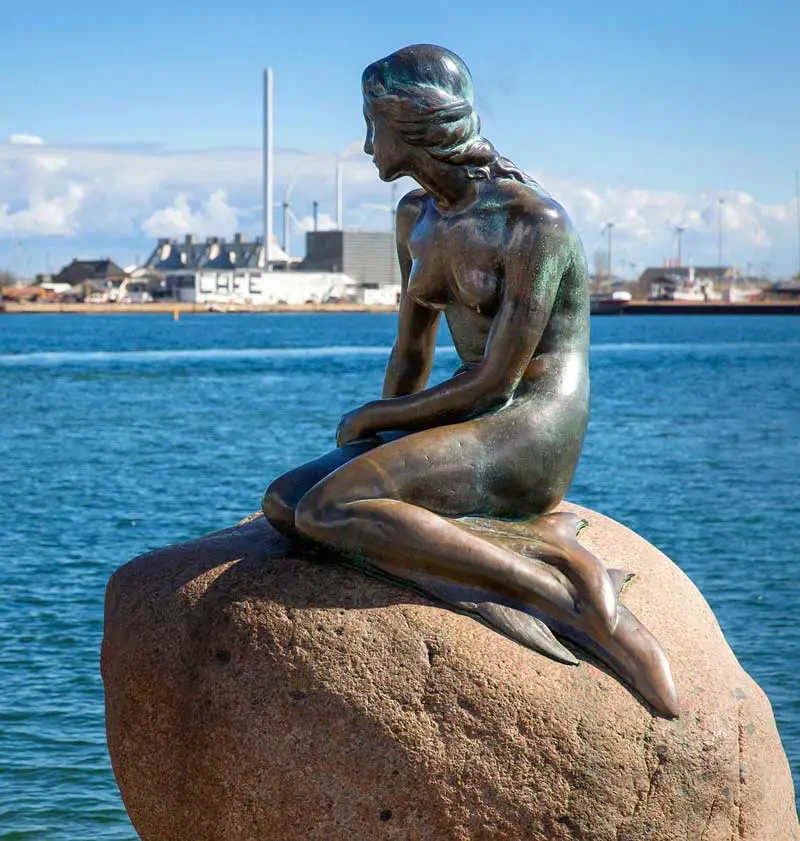
Originally a Viking fishing village founded in the 10th century,
Copenhagen became the capital of Denmark in the early 15th century.
Beginning in the 17th century it consolidated its position as a
regional centre of power with its institutions, defences and armed
forces. After suffering from the effects of plague and fire in the 18th
century, the city underwent a period of redevelopment. This included
construction of the prestigious district of Frederiksstaden and
founding of such cultural institutions as the Royal Theatre and the
Royal Academy of Fine Arts. After further disasters in the early 19th
century when Nelson attacked the Dano-Norwegian fleet and bombarded the
city, rebuilding during the Danish Golden Age brought a Neoclassical
look to Copenhagen’s architecture. Later, following the Second World
War, the Finger Plan fostered the development of housing and businesses
along the five urban railway routes stretching out from the city
centre.
Since the turn of the 21st century, Copenhagen has seen strong urban
and cultural development, facilitated by investment in its institutions
and infrastructure. The city is the cultural, economic and governmental
centre of Denmark; it is one of the major financial centres of Northern
Europe with the Copenhagen Stock Exchange.
Plan and Book:



Overview
Copenhagen is one of the most warm and inviting cities in existence.
A picture of this quaint city includes cobblestone streets, a few
towering skyscrapers and friendly people that will greet you at every
turn. This is very unlike the typical hot pavement and traffic-covered
streets that are usually associated with a major city. Copenhagen is
truly a fairy-tale town where pollution does not exist but the sweet
scent of bakeries envelopes the area instead. Copenhagen is part
cosmopolitan city and part small town that has plenty to offer its
visitors.
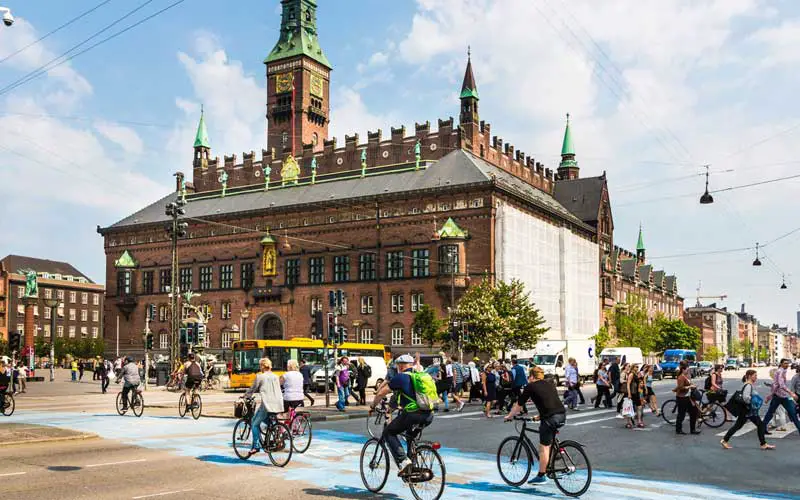
Copenhagen is the political, financial and cultural capital of Denmark
that 1.5 million people call home. Museums, historical sights, cafes,
and the most delicious restaurants abound here. The day will captivate
you and the night will intrigue you, so do not plan to go to sleep
early. Go crazy and live it up at the many clubs and bars, or have a
cappuccino while watching a magnificent sunset. Copenhagen has quite a
tumultuous history, starting in 1157, when Valdemar the Great gave it
to Bishop Absalon. Before this transition year, Copenhagen was just a
simple fishing town. Bishop Absalon built a castle here, which is now
Christianborg Palace. Copenhagen grew to be a great center as a Baltic
trade route, and in the 15th century, the town became the royal
residence and the capital of Norway and Sweden.
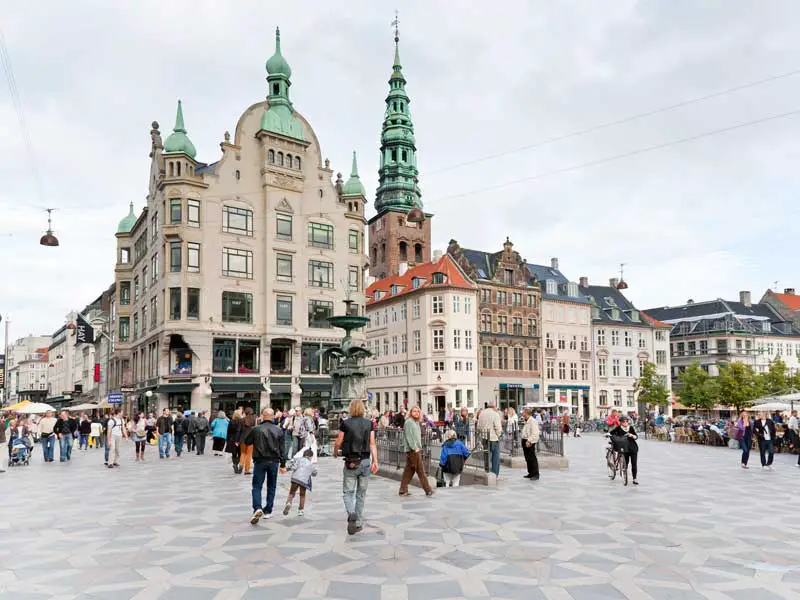
Walking around Copenhagen today, one will be able to see beautiful
castles and towers that date back to the 16th century and the rule of
Christian IV. This king was enamored of fine architecture, which
resulted in a wealth of construction that still marvels visitors today.
We are quite lucky Christian IV built up the city as much as he did,
because some of the buildings from his time are the only historical
landmarks that survived two major fires in the 18th century, as well as
the bombings by Lord Nelson during the Napoleonic Wars. A sweet lull of
peace sweeps over Denmark now, which disguises Copenhagen’s difficult
history. It is a colorful town brought to life by street musicians and
performers on every corner. Delight your eyes with the lights that
illuminate these same streets at night, and take a stroll along a
drawbridge over one of the many canals. It is impossible not to fall in
love with this seafaring city.
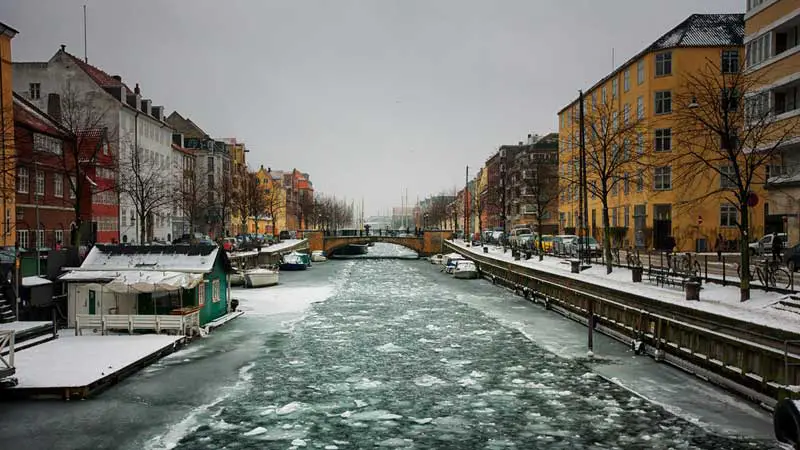
Attractions and Activities
Grand Tour of Copenhagen: Capture the essence of Copenhagen on this
tour of the Danish capital. Visit the Little Mermaid statue and watch
the Changing of the Guard at the Amalienborg Palace.
City and Harbour Tour: Explore Copenhagen by land and by boat. Take
snaps of Amalienborg Palace and the Little Mermaid statue at scheduled
photo stops.
Tour to Viking Ship Museum: Discover Denmark’s rich Viking heritage on
a tour to the Viking Ship Museum at Roskilde. Imagine the plundering
and pillaging of a Viking raid as you take in a display of five
1,000-year-old wooden ships.
Copenhagen City Tour: Take in the whimsical architecture of the Danish
capital on this whistle-stop bus tour of the city’s most famous
museums, landmarks, and palaces.
Castle, Palaces, and Countryside Tour: Drive through the forests north
of Copenhagen to visit the 17th-century Frederiksborg Castle. Along the
way, pass Fredensborg Palace and Kronborg Castle, a World Heritage Site
and the setting for Shakespeare’s Hamlet.
Hop-on, Hop-off Tour of Copenhagen: Explore Copenhagen the easy way –
on a double-decker bus. Alight at City Hall Square, view the Little
Mermaid, and visit Copenhagen Zoo with this flexible pass, valid on
three routes.
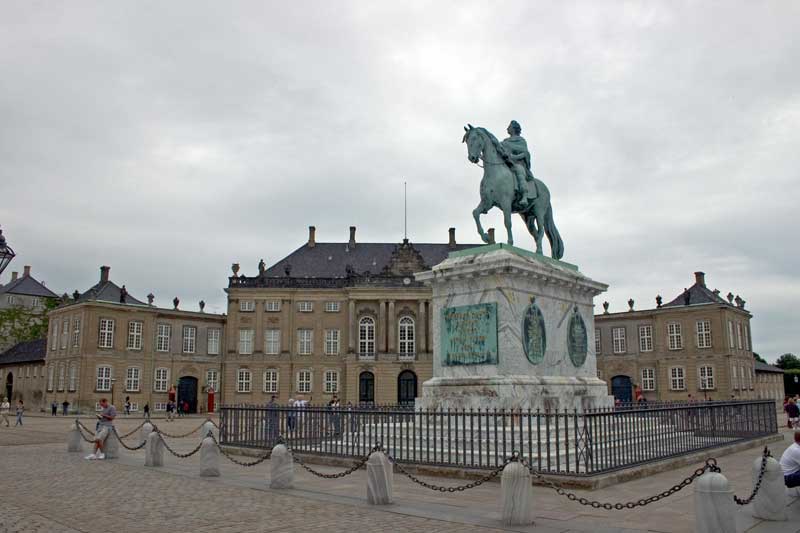
Amalienborg is the winter home of the Danish royal family, and is
located in Copenhagen. It consists of four identical classicizing
palace façades with rococo interiors around an octagonal
courtyard; in the centre of the square is a monumental equestrian
statue of Amalienborg’s founder, King Frederick V. Amalienborg was
originally built for four noble families; however, when Christiansborg
Palace burned on 26 February 1794, the royal family bought the palaces
and moved in. Over the years various kings and their families have
resided in the four different palaces. The Frederiksstaden district was
built on the former grounds of two other palaces.
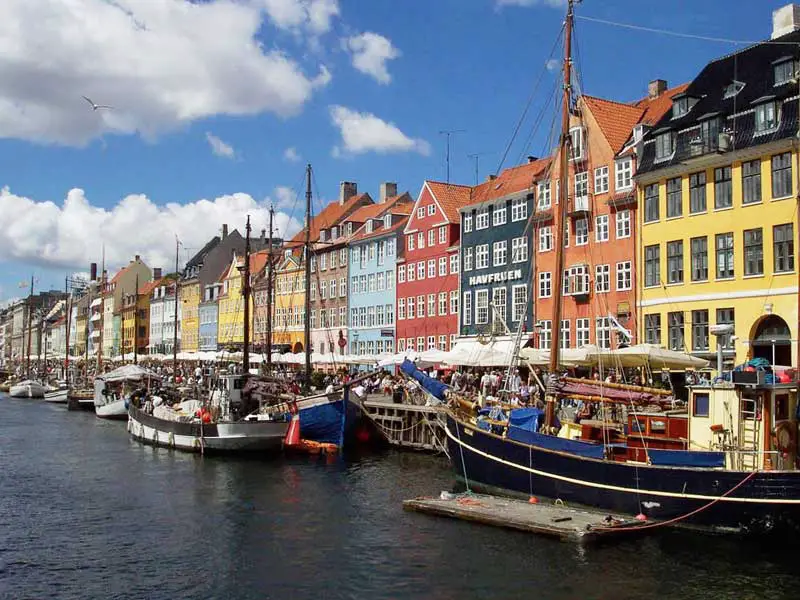
Nyhavn (literally: New Harbour) is a 17th-century waterfront, canal and
entertainment district in Copenhagen, Denmark. Stretching from Kongens
Nytorv to the harbour front just south of the Royal Playhouse, it is
lined by brightly coloured 17th and early 18th century townhouses and
bars, cafes and restaurants. Serving as a “heritage harbour”, the canal
has many historical wooden ships.
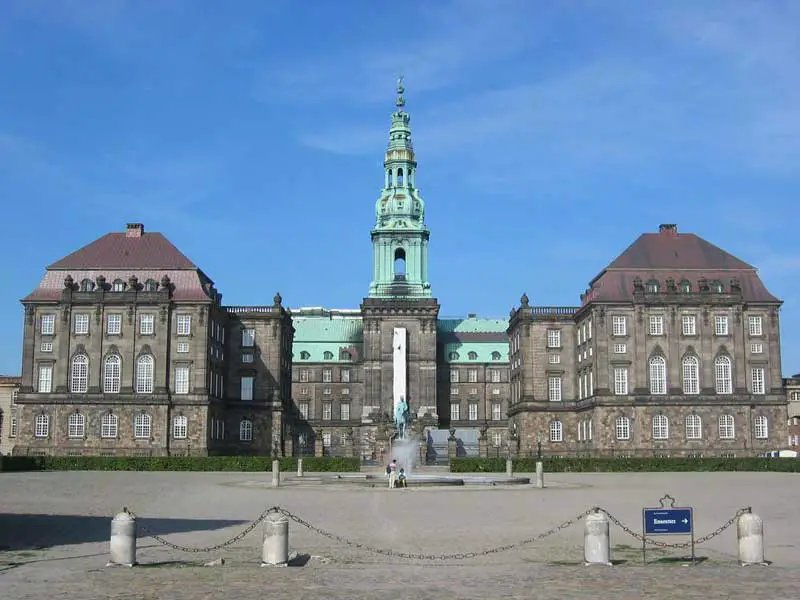
Christiansborg Palace, on the islet of Slotsholmen in central
Copenhagen, is the seat of the Danish Parliament, the Danish Prime
Minister’s Office and the Danish Supreme Court. Also, several parts of
the palace are used by the monarchy, including the Royal Reception
Rooms, the Palace Chapel and the Royal Stables.
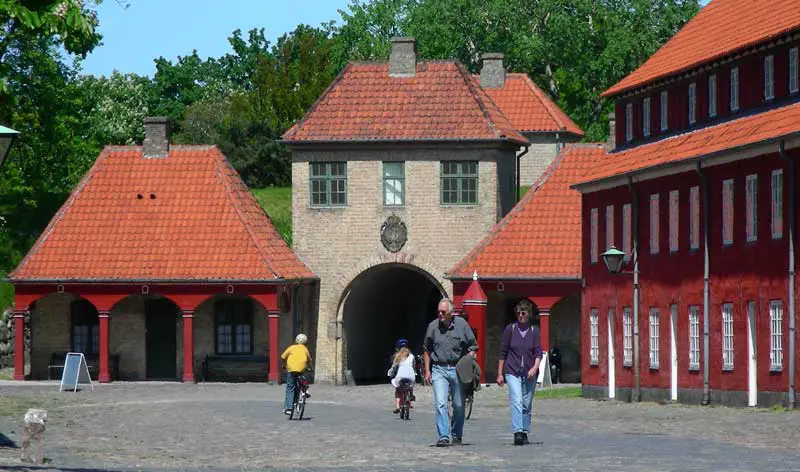
Kastellet, located in Copenhagen, is one of the best preserved star
fortresses in Northern Europe. It is constructed in the form of a
pentagram with bastions at its corners. Kastellet was continuous with
the ring of bastioned ramparts which used to encircle Copenhagen but of
which only the ramparts of Christianshavn remain today.
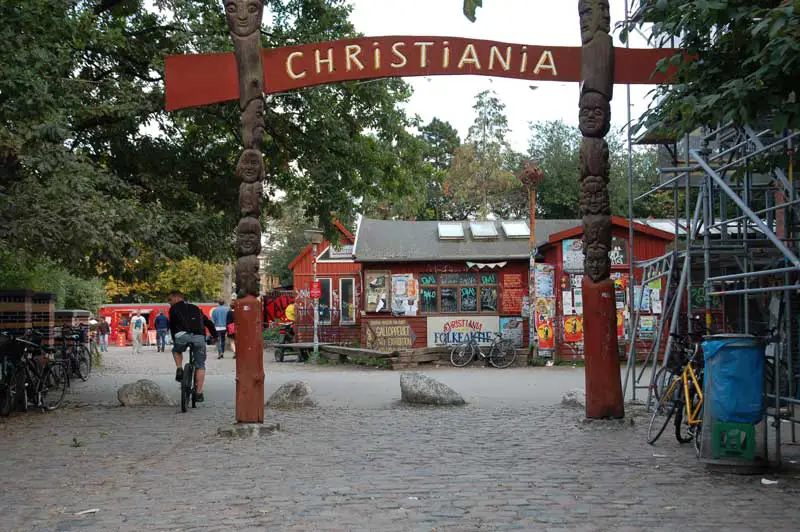
Christiania, also known as Freetown Christiania (Danish: Fristaden
Christiania) is a self-proclaimed autonomous neighbourhood of about 850
residents, covering 34 ha in the borough of Christianshavn in the
Danish capital Copenhagen. Civic authorities in Copenhagen regard
Christiania as a large commune, but the area has a unique status in
that it is regulated by a special law, the Christiania Law of 1989
which transfers parts of the supervision of the area from the
municipality of Copenhagen to the state. It was closed by residents in
April 2011, whilst discussions continued with the Danish government as
to its future, but is now open again.
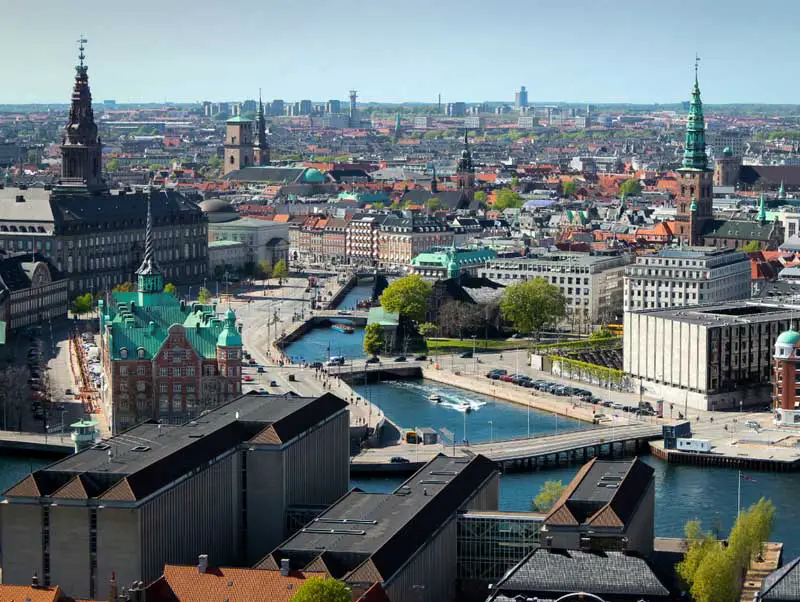
Slotsholmen (English: The Castle Islet) is an island in the harbour of
Copenhagen, Denmark, and part of Copenhagen Inner City. The name is
taken from the successive castles and palaces located on the island
since Bishop Absalon constructed the city’s first castle on the island
in 1167 at the site where Christiansborg Palace lies today. Recognised
as the centre of the Government of Denmark since the Middle Ages, the
island is sometimes referred to as the Island of Power, and is lined
with central government institutions and ministries; the name
Slotsholmen is thus also frequently used as a metonym for overall
Danish governmental administration.
The island is dominated by the vast Christiansborg Palace which houses
the Danish Parliament, the Supreme Court of Denmark, the Prime
Minister’s Office and the State Rooms of the Queen. Also located on the
island are the most important ministries, the Danish National Archives,
the Royal Danish Library, several museums and the historic buildings of
the Christian IV’s Stock Exchange, the Chancellery and Christian IV’s
Brewhouse.
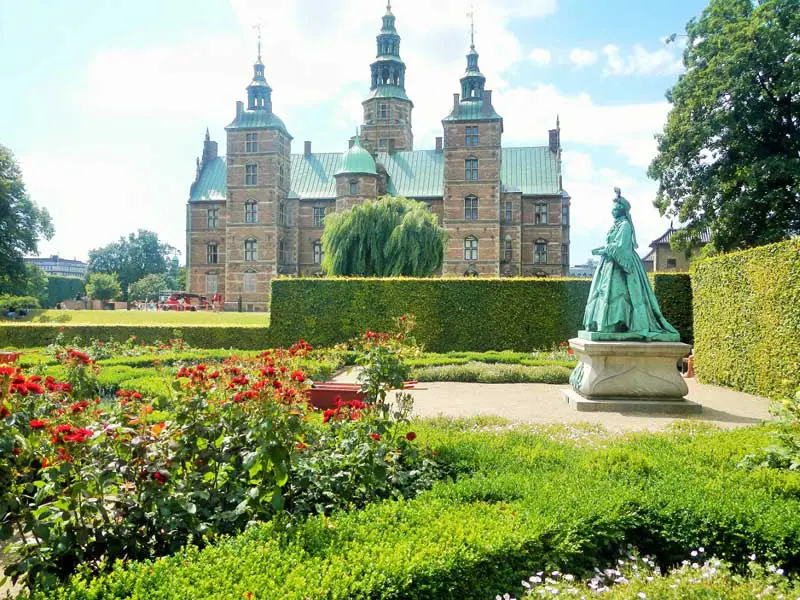
Rosenborg Castle Gardens (Danish: Kongens Have literally The King’s
Garden) is the oldest and most visited park in central Copenhagen,
Denmark. Established in the early 17th century as the private gardens
of King Christian IV’s Rosenborg Castle, the park also contains several
other historical buildings, including Rosenborg Barracks, home to the
Royal Guards, as well as a high number of statues and monuments. The
park also plays host to temporary art exhibitions and other events such
as concerts throughout the summer.
Surrounding Area
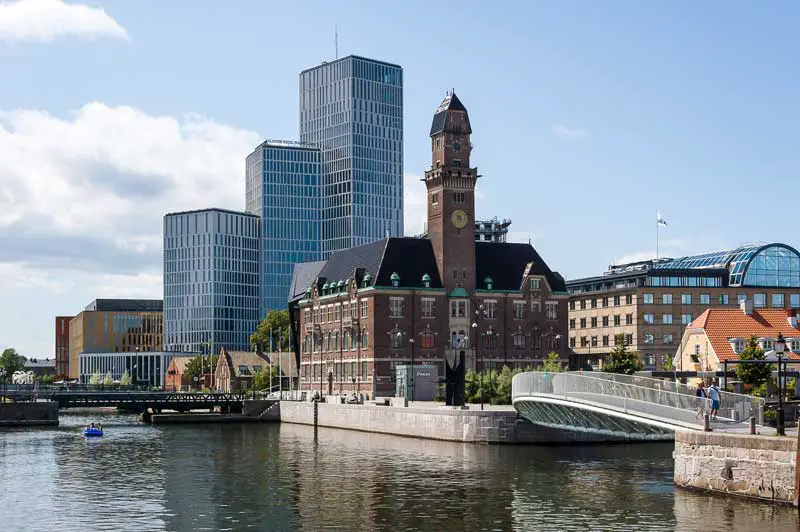
Malmo, Sweden
Malmö is the former Danish province of Scania’s largest city,
and today the third largest city of Sweden. The municipality has a
population of around 305,000 in the municipalty, and around 650,000 in
the metropolitan area. It’s a port city located in the province of
Scania on the southern tip of the country. About one third of the
Malmö population are from various other countries, making the city
the most cosmopolitan in Sweden. This has contributed to a rich
cultural life and many exotic and fine food opportunities. The ship
building company of Kockums used to be the city’s biggest employer, but
today the industrial city of old has been replaced by vast areas of
middle-class suburban housing and modern eco-friendly neighbourhoods.
Malmö has a vibrant night life, and while prices are generally
lower than in other Swedish cities, they are for the most part
substantially higher than they are across the bridge in Copenhagen.
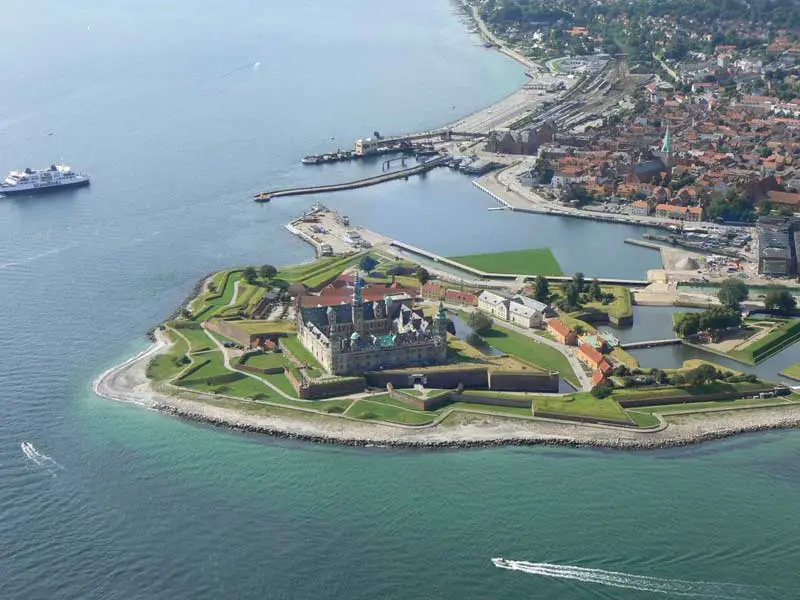
Helsingor
Helsingor, also known as Elsinore, is a port city in eastern
Denmark. Overlooking the Oresund strait in the north eastern corner of
the island Zealand, the 15th-century Kronborg Castle provided the
setting for Shakespeare’s ‘Hamlet.’ It is the closest city to Sweden,
with frequent ferry connections to its twin city across the strait;
Helsingborg. Nearby, the M/S Maritime Museum of Denmark illustrates 600
years of Danish seafaring history. The glass-walled Culture Yard in the
old shipyard organizes cultural events. On the pier is ‘Han,’ a
polished steel sculpture of a man.
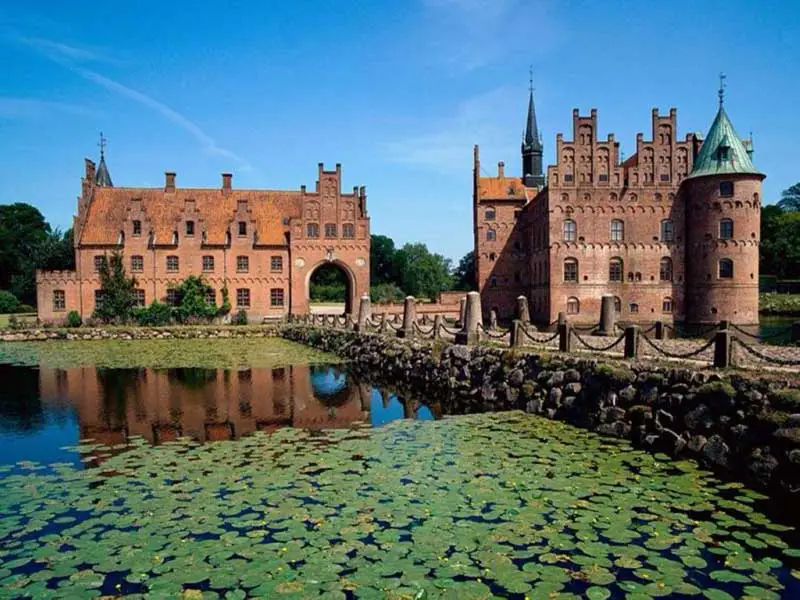
Hillerod
A small town dominated by its huge palace, , Hillerod is nestled
between majestic beech forests, at the northern end of the s-train line
from Copenhagen. Offering baroque gardens and a laid back city centre,
Hillerød is the main regional centre and transport hub of North
Zealand. For visitors, this small city of some 30.000 inhabitants is
above all known for its large impressive renaissance castle. Ever since
the first railway reached the city in 1864, Hillerød has been
the main transportation hub of the region. Since then a number of small
railways has been build to connect the city with nearly all the towns
of North Zealand, and the railway station is filled to the brim with
commuters during rush hour peaks. For a day of visiting castles, you
can combine visits to Fredensborg castle and Kronborg castle in
Elsinore, by catching the small private railway that runs between
Hillerød and Helsingør which also stops in Fredensborg on
the way. If you’re visiting from Copenhagen, it is possible to return
from Elsinore by the Kystbanen’ railway.
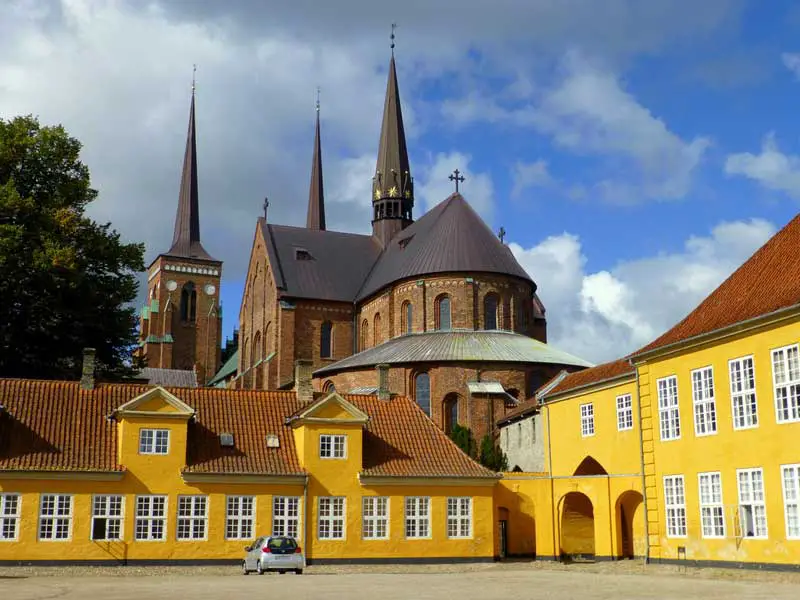
Roskilde
Denmark’s ancient capital dating from the Viking age and a World
Heritage site, its famous cathedral is full of the tombs of ancient
kings, and the fantastic Viking museum. The town was one of the most
important in Denmark for the next few centuries until the reformation
ended the importance of the church. The most important historical
sights are the Viking Museum and Roskilde Cathedral. Roskilde is also
home to the giant rock music event, Roskilde Festival, one of the Big
Four European music festivals, Roskilde Festival, which attracts up to
110,000 visitors each year in July. Roskilde is in West Zealand,
Denmark, 35 km west of Copenhagen.
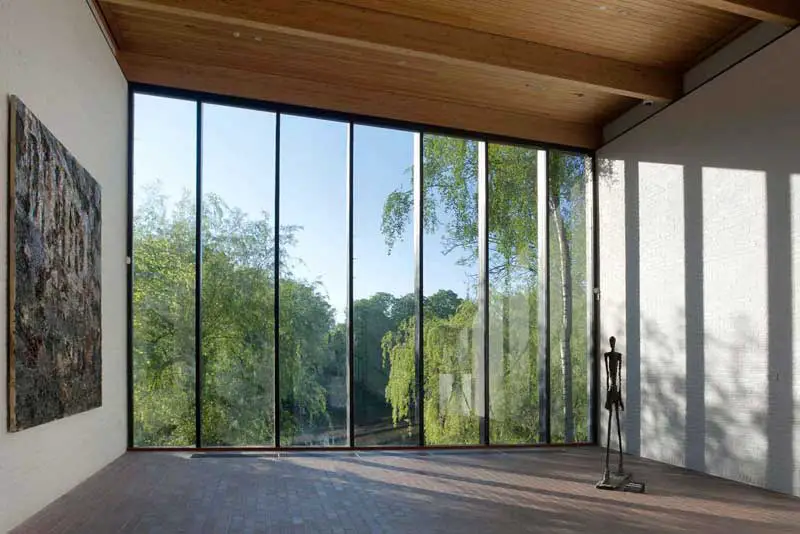
Humlebaek
The small town of Humlebaek, situated on the east coast of the
island of Zealand in eastern Denmark, is 35km north of Copenhagen. It
is home to the Louisiana Museum of Modern Art, the outstanding museum
of modern art in Denmark. The Museum is 35 minutes with DSB rail from
the Copenhagen’s Central Station. When you use the train, special
combination tickets for the rail fare and museum entry fee are
available. Humlebaek began as a fishing village and its history can be
traced back to the 16th century. The town has grown along with the
towns of Sletten and Torpen.
Design by W3layouts
